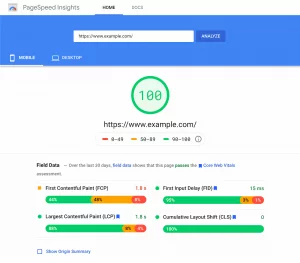Picture this: you’re a chef preparing a gourmet meal for a grand feast. Every ingredient needs to be just right, every flavor balanced to perfection. Now, imagine if you had the chance to test your recipe in a controlled environment before serving it to your guests. That’s essentially what a staging environment is in the world of software development—a test kitchen for your digital creations.
One of the key strategies employed by development teams is the use of staging environments. In this blog, we’ll unravel the mystery behind staging environments, exploring why they’re not just a luxury but a necessity in today’s tech-driven era.
What is Staging?
Staging is a crucial phase in the software development lifecycle where developers and testers validate the application before it goes live. It is essentially a replica of the production environment, comprising similar configurations and resources. Unlike the production environment, any issues or bugs discovered in staging won’t affect end-users, allowing for thorough testing and refinement before deployment.
Staging serves as a buffer between development and production, allowing teams to identify and rectify issues before they reach end-users.
Why is Staging Important?
- Risk Mitigation: Staging environments help mitigate risks by identifying potential bugs, security vulnerabilities, and performance issues before the application is released to users.
- User Experience Optimization: Thorough testing in staging ensures a seamless user experience by eliminating glitches and errors that could disrupt user interaction.
- Confidence in Releases: Development teams gain confidence in their releases as they can assess the application’s behavior in a controlled environment before launching it to a wider audience.
10 Top Tools for Setting Up a Staging Environment for WordPress
Setting up a staging environment for a WordPress website is essential for testing updates, themes, and plugins before deploying them to your live website. Here are ten top tools that can aid in creating a staging environment for your WordPress website:
1. Local by Flywheel
Local by Flywheel is a user-friendly and powerful tool for creating local WordPress development environments. It allows you to quickly set up a WordPress site on your computer for staging and testing purposes.
2. WP Stagecoach
WP Stagecoach simplifies the staging process by creating a secure, isolated staging site. It incorporates your existing WordPress site and allows you to push changes from staging to production seamlessly.
3. WP Staging
WP Staging is a popular WordPress plugin that enables you to clone your entire website to a staging area. It efficiently copies your site’s data and files, allowing you to test updates and changes without affecting your live site.
4. Duplicator
Duplicator is a versatile plugin that not only helps in creating backups of your WordPress site but also facilitates cloning and migration. You can duplicate your WordPress website to a staging environment with ease using this plugin.
5. Beaver Builder
Beaver Builder is a drag-and-drop page builder WordPress plugin for WordPress. It allows you to design and customize your staging site visually, making it an excellent tool for creating and testing new layouts without affecting your live site.
6.DesktopServer
DesktopServer is a powerful tool that simplifies the process of creating local WordPress development environments. It provides a user-friendly interface and enables you to create staging sites quickly and efficiently.
7. Nestify
Nestify is a well-known hosting provider that offers a staging feature in its hosting plans. Here, you can easily create a staging environment, test your WordPress site, and then push the changes to your live website seamlessly.
How to Test in a Staging Environment?
1. Functional Testing
Functional testing ensures that the software functions as intended. It involves testing various functions and features of the application to validate its behavior. Verify that all functions of the application work as intended. Test different use cases to ensure the application behaves correctly under various scenarios. Tools needed for this testing include Selenium, JUnit, TestNG, and Cucumber.
2. Performance Testing
Evaluate the application’s responsiveness, stability, and speed under different loads. This type of testing evaluates how the application performs under different conditions, such as heavy user loads or high traffic volumes. Tools needed for this type of testing include Apache JMeter, LoadRunner, Gatling, and Locust.
3. Security Testing
Identify and rectify security vulnerabilities. Conduct penetration testing, security scanning, and code analysis to ensure the application is secure against potential threats. Tools needed for this type of testing include OWASP ZAP, Burp Suite, Acunetix, and Nikto.
4. Regression Testing
Regression testing ensures that new code changes do not adversely affect existing functionalities of the application. Ensure that new code changes have not adversely affected existing functionalities through this type of testing. Automated regression tests can be particularly useful in this stage. Tools needed for this type of testing include Selenium, JUnit, TestNG, and Jenkins.
5. User Acceptance Testing (UAT)
Involve stakeholders and end-users to validate the application’s usability, functionality, and overall user experience. Their feedback is invaluable for making necessary improvements. Tools needed for this type of testing include Usersnap, TestRail, and UserTesting.
6. Integration Testing
Verify that different modules or components of the application work together seamlessly. Integration testing ensures that individual pieces of software function well as a whole. Tools needed for this type of testing include Postman, Apache Camel, and SoapUI.
7. Data Testing
Validate the accuracy and integrity of the data processed by the application. This is crucial for applications dealing with sensitive or critical data. Tools needed for this type of testing include Apache JMeter (for database performance testing), Talend, and QuerySurge.
Best Practices for Staging Testing
- Environment Parity: Ensure that the staging environment closely mirrors the production environment. Consistency in configurations and resources is key to accurate testing.
- Version Control: Keep track of all code changes made in the staging environment. Version control systems help in identifying what changes have been made and enable easy rollback if necessary.
- Collaboration: Foster collaboration between development, testing, and operations teams. Clear communication and collaboration streamline the testing process and issue resolution.
- Automation: Automate repetitive and time-consuming tests to expedite the testing process. Automated tests can be run frequently, ensuring continuous validation of the application.
- Feedback Loop: Establish a feedback loop where issues identified in the staging environment are communicated effectively to the development team. This loop ensures that identified issues are resolved promptly.
Conclusion
Staging environments are the linchpin of robust software development processes. By conducting thorough and systematic testing in staging, development teams can get certainty that their applications are of the highest quality, meeting user expectations and industry standards. Embracing the best practices outlined in this guide will undoubtedly pave the way for successful, error-free software releases, providing end-users with exceptional experiences.
FAQs
How does a staging environment contribute to the overall software development process?
A staging environment acts as a safety net in the software development lifecycle. It allows developers to experiment, innovate, and implement changes without risking the stability of the live application. By catching and resolving issues in the staging phase, developers can confidently roll out updates, ensuring a positive user experience and maintaining the reputation of the application.
How often should testing be conducted in the staging environment?
Testing in the staging environment should be conducted whenever there are significant changes planned for the application, such as feature updates, major design changes, or security enhancements. It’s also crucial to perform testing before each new release to ensure that the application is error-free and ready for deployment. Regular, systematic testing in the staging environment helps maintain the quality and dependency of the application over time.
Can I test everything in a staging environment?
Staging environments are ideal for testing most changes, but there are limitations. Certain issues may only surface in the live environment due to differences in user behavior, data volumes, or external factors.
Are there any risks associated with staging environments?
Staging environments are generally safe for testing, but there is a minimal risk of data discrepancies if your staging data isn’t identical to the production data. Always exercise caution when deploying changes to the live environment.



